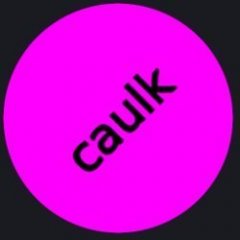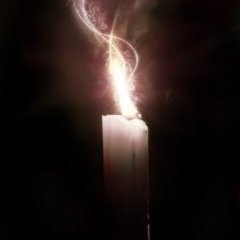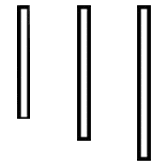-
Posts
689 -
Joined
-
Last visited
-
Days Won
61
Epifire last won the day on June 5
Epifire had the most liked content!
Reputation
887 LegendaryAbout Epifire
- Birthday 06/03/1995
Profile Information
-
Gender
Male
-
Location
United States
Recent Profile Visitors
16778 profile views
-
I've got a feeling, with how poorly Arkane's fortunes have been in recent, there's a solid chance they might actually return to their golden boy for a sequel. Depending on if their Blade game ends up shipping or selling well, or if they get closed down by ZeniMax (which would be extremely unfortunate indeed). I know Deathloop takes place in the same universe but I still have yet to boot it ups in my Steam. Just didn't grab me, like Dishonored or Prey. Hard to say after the closure of Arkane Austin but there's a chance.
-
It most certainly wont play like a traditional Thief game but it really could be a lot of fun if done right. One of the things I realized about folks doing the Half-Life Alyx mod for keyboard/mouse, is that the game REALLY isn't built for that. Spatial controller based puzzles are one thing but just the overall gameplay pacing would feel terrible outside of that medium. As most enemies and interactions in VR need to be much slower paced. I hope it's decent. I'm not holding my breath but this is a pretty good (VR based) company behind this development. I don't know how well they'll really "get" this community or universe but I guess we'll have to wait and see.
-
Indeed it is. It would seem that HE is now The Eye.
-
Yeah that's my bad, I misread the title of this thread and didn't think it was posted on yet.
-
From what I could gather, I don't think they're cutting all his lore this time. The video implies the old mechanical eye imparts his soul to the protagonist or something. At least that's what they made it out to appear as. Her voice acting felt really wooden though. And while I like some throwback elements to TDS, it still feels really... undefined I guess? Like I'm a fan of them trying to not go hyper realistic on the art but now it has that plastic sheen to it. Thief was always about gritty fantasy, which at least T4 understood that; all the while getting all the story elements dead wrong. Like, this direction is confusing but I still want to see it do well. Renewed development interest could promise better direction down the road. Though it's hard to not be bitter with how little AAA seems to understand this series.
-
Yeah, it's a sorta wild decision to bring back a dead franchise as a VR only title. Would be nice if it does good enough for them to consider a standard keyboard and mouse follow up. I loved Half-Life Alyx as a VR title but I'm very aware of just how much the traditional gameplay had to sit on the sidelines to make it work. Best case scenario, is that it sells good and renews an interest in the franchise. Worst case is we just get a stinker of a fence sitter and our beloved series is no more dead than it was before. I'm optimistic but I'm certainly not holding my breath here either.
-

Proposal: Flashbombed AI's become Blackjackable
Epifire replied to chumbucket91's topic in I want to Help
Not sure what all it would take but that would be a very welcome addition. Would really boost the utility of the flashbomb. -
Ooooof, I missed this post before I tossed up an announcement thread of my own. Yeah, I'm pretty excited. Totally not what I expected on my bingo card for today.
-
So out of the blue this just dropped. https://www.youtube.com/watch?v=uG3E9BDdoak I'm honestly pretty impressed this was the direction they went with. A return to form in the traditional feel of the genre still is desired but I think there's a lot of room for a good Thief VR experience. Thoughts?
-
If you're generating normals from a heightmap that you have and want it more even, take it into Photoshop (or Gimp) and give it a Hard Mix blend to crush the low areas. A levels adjustment with a low, mid and high slider threshold can accomplish that too. Just gotta be careful, as it'll remove details fast; since you're ultimately compressing the height information. With just a little tweaking of the values, you can get some good flattening of the problem areas.
-
Sadly, this build had canceled the much anticipated prop hunt mode; as the team concluded the player hiding in plain sight as a household object might break realism.
-
Yep, that'd be the one! I had some issues with minor syntax errors, when setting it up; which is why I'd still opt to write a short guide about it. The one click, do-all option is really nice. I've only had one issue (only tested with Maya) that has UV borders being rendered as hard edged in the final product. I worked around it by doing one final export with Lightwave, as it seems to be a smoothing issue. Other than that, it's worked flawlessly for me.
-
I hadn't tested the importer yet but looking at it now, it indeed looks to just be the FBX converter that Greebo integrated. @greeboCorrect me if I'm wrong but I don't think the Dark Radiant model converter supports OBJ yet? Because yeah, datiswous brings up a pretty good point as I don't think DR can handle OBJ files directly right now. @datiswous In this case I'd recommend the FBX to LWO batch converter for heavy use. I wouldn't expect anyone to really know about it, as I don't think we've really talked about this anywhere yet. I'd intended to write an article on the wiki to document how to set it up, but that kinda fell by the wayside since Greebo directly incorporated it into DR. In the FBX to LWO batch method, you just export your models to a mirrored folder structure. It's hierarchy is identical to the folder paths that your final models are contained in, within the target FM's model directory. So all you have to do is export to your FBX folder, run the batch file and it automatically replaces the meshes in the output directory. Big thanks to Greebo on the converter system! I originally had reached out to him over the idea a while ago and he made it into a full fledged feature. I can't tell you how much time this saves when working almost entirely with models in a level. If anyone would like to see the setup on that, lemme know and I'll try to get a wiki page made to document the process.
-
You'll be happy to know then that we just added OBJ as a supported model format! I've not branched out from using LWO myself yet but that helps make modeling in TDM, a lot more accessible. Congrats though on starting your first FM!
-
It's definitely still a really big deal but normally I've seen specific artists/studios have a streamlined setup for this. While I'm a Substance guy through and through right now, I can still see a benefit of grabbing accurate, real-world data to layer into a complex material. On games that are gunning for photorealism, I've even seen Photogrammetry experience listed as a plus for hiring.



















